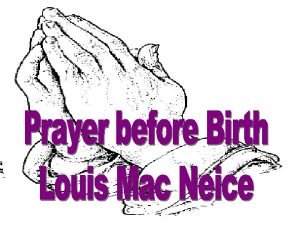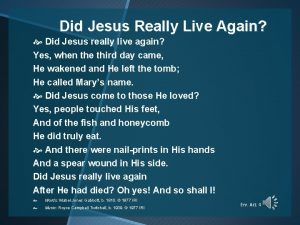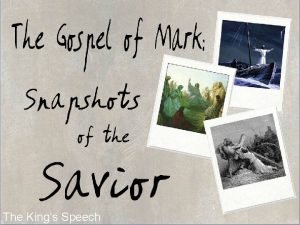How Did Jesus Fulfil Yet Not Destroy the









- Slides: 9

How Did Jesus “Fulfil” Yet Not “Destroy” the Law? (Matthew 5: 17 -20) I. What Does It Mean to “Fulfil” the Law and Prophets? A. “Fulfil” in Matthew 5: 17 pleroo (plerÒv) –“ 1. to make full, to fill up, … a) to cause to abound, … 2) to render full, i. e. to complete… c. 2. of sayings, promises, prophecies, to bring to pass, ratify, accomplish…” (Thayer).

How Did Jesus “Fulfil” Yet Not “Destroy” the Law? (Matthew 5: 17 -20) I. What Does It Mean to “Fulfil” the Law and Prophets? B. Jesus was under the Law (Galatians 4: 4). 1. He was obedient to it without sin (Hebrews 4: 15).

How Did Jesus “Fulfil” Yet Not “Destroy” the Law? (Matthew 5: 17 -20) I. What Does It Mean to “Fulfil” the Law and Prophets? C. His very birth into this world was a “fulfillment” of the Law and the Prophets. 1. He was the Prophet Moses promised (Deut. 18: 15). 2. The Messiah of Daniel (Dan. 9: 25, 26).

How Did Jesus “Fulfil” Yet Not “Destroy” the Law? (Matthew 5: 17 -20) II. Would Jesus Set Aside the Law Or Leave It In Force? A. The Law would not pass “Till all is fulfilled” (Matthew 5: 18).

How Did Jesus “Fulfil” Yet Not “Destroy” the Law? (Matthew 5: 17 -20) II. Would Jesus Set Aside the Law Or Leave It In Force? B. “Heaven and earth” passages (Matt. 24: 35; Mark 13: 31; Luke 21: 33). 1. “…One tittle of the law to fail” (Luke 16: 16 -17). 2. The law was our “tutor” (Gal. 3: 24, 25).

How Did Jesus “Fulfil” Yet Not “Destroy” the Law? (Matthew 5: 17 -20) III. The Law Was Not Intended to Be In Force Forever. A. Jeremiah 31: 31 -33 - “new covenant. ” 1. Jesus declares this covenant (Matt. 26: 28; Mark 14: 24; Luke 22: 20).

How Did Jesus “Fulfil” Yet Not “Destroy” the Law? (Matthew 5: 17 -20) III. The Law Was Not Intended to Be In Force Forever. B. God “has made the first obsolete” (Hebrews 8: 7 -13). 1. “Takes away the first that He may establish the second” (Heb 10: 9 b).

How Did Jesus “Fulfil” Yet Not “Destroy” the Law? (Matthew 5: 17 -20) III. The Law Was Not Intended to Be In Force Forever. C. “Christ is the end of the Law” (Romans 10: 4).

How Did Jesus “Fulfil” Yet Not “Destroy” the Law? (Matthew 5: 17 -20) III. The Law Was Not Intended to Be In Force Forever. D. “Not under law, but under grace” (Romans 6: 14, 15). 1. “Under law” to Christ (I Cor. 9: 21) 2. Follow- “law of Christ” (Gal. 6: 2).

















